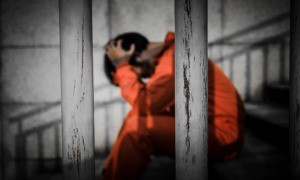***There are 345 days left in the first term of President Barack Obama, and the president has still not nominated someone to serve as administrator of the Office of Juvenile Justice and Delinquency Prevention. Attorney General Eric Holder opened the Coordinating Council on Juvenile Justice and Delinquency Prevention meeting this week, welcoming new acting administrator Melodee Hanes and thanking the outgoing acting, Jeff Slowikowski.
He then said he believed that, as the first Obama term nears its ends, juvenile justice “will be one of the legacy items.” It is not the first time he or his OJJDP leaders have made mention of his wish that juvenile justice be part of the legacy for his DOJ.
Without pinning blame on the administration for the fact that the juvenile justice budget has plummeted in the past two years, or that reauthorization of the Juvenile Justice and Delinquency Prevention Act is a distant memory…it’s pretty breathtaking that Justice leadership hasn’t backed off that mantra, right?
If juvenile justice from 2009-2012 is remembered, we’d guess it will be for these things;
1-The Supreme Court’s rulings on juvenile life without parole and interrogating juveniles.
2-The state-level push to use smart fiscal policy as leverage to decrease juvenile incarceration in favor of more community alternatives
3-The downsizing of OJJDP’s influence on, and relationship with, states.
4-The emergence of technology as a mitigating factor in juvenile delinquency (e.g., flash mobs, Facebook-inspired violence and sexting).
So OJJDP is in there, but we’re not sure that is what Holder means by legacy. The President reveals his 2013 budget on Monday, and all eyes in the juvenile justice advocacy community will be looking at how important the administration thinks JJDPA-related funding is. The importance will be measured in dollars.
***The council meeting featured an interesting presentation by Edward Mulvey and Carol Schubert discussing the Pathways to Desistance project. The study, which involved about a dozen lead researchers and site coordinators, followed 1,354 serious offenders in Phoenix and Philadelphia for eight years. All of them were involved in the system for felonies, and about half of those offenders committed a crime involving harm to another person.
In our humble opinion, this is the most important juvenile justice research in at least a decade because it gets to the heart of the most important question: What can be done to influence the actions of juveniles that have committed serious crimes? And alternatively: What is being done that does not steer serious young offenders away from crime?
The study looked hard at the interplay between offending, mental health, substance abuse and future offending. Researchers found that the presence of a diagnosed mental health disorder does not affect the relationship between risk markers and the future offending of juveniles, but the presence of a substance addiction does change the relationship between risk factors and future offending.
Put another way: If Tommy and Jamal have the same risk factors and one has a mental health disorder, they have the same prospects for desisting from future offending. If Larry and Tony have the same risk factors but Tony is addicted to drugs, Tony is significantly more likely to reoffend.
About two-thirds of juveniles inside of juvenile facilities get substance abuse treatment at a rate of one session every five days. Just 14 percent of serious offenders sentenced to community programs or probation receive treatment, and the ones that do get one session per 50 days.
We wrote in late 2010, as the initial reports from Pathways to Desistance became public, that 2011 could be a big year for juvenile drug treatment funding at the federal level. 2011 wasn’t a big year for any funding on the federal level, nor was 2012. But with a lot of money from the Affordable Care Act coming online next year (potentially), perhaps the presentation today could prompt some discussion of a joint venture between Justice and the Department of Health and Human Services.
***Speaking of substance abuse: No coffee at the coordinating council meeting, no doubt due to the most influential muffin in history.
***A couple of noteworthy events coming up:
-After a year off, the Annie E. Casey Foundation is bringing back the Inter-Site conference for the Juvenile Detention Alternatives Initiative. It will be held April 24-26 in Houston.
Glad it’s back. If the OJJDP conference was Juvenile Woodstock (NO idea who started that nickname), call the JDAI conference Juvenile Jazz Fest, since it’s held with more regularity.
-12th Annual Jerry Lee Crime Prevention Symposium, April 23-24 in Washington. Day 1 closes with a roundtable discussion moderated by former Associate Attorney General Laurie Robinson exploring “The Costs of Cutting Criminal Justice and the Promises of Evidence-Based Policy.” Click here for details, and here to register.
-Need to get up to speed on this issue? Sign up for National Council of Juvenile and Family Court Judges’ March 7 webinar, “The Truth About Trauma and Delinquency.” It will look specifically examine how traumatic events can have a long-term impact on those who experience trauma and how these events affect their families and communities. Click here to register.
-Georgetown University’s Center for Juvenile Justice Reform is offering certificate programs for multi-system integration. There are two programs for public sector leaders (July 6-13 and Oct. 10-17) and for private sector leaders (Nov. 7-14).
The deadline for public sector sessions is March 22; for the private sector training it’s July 17. For more information and to apply, click here.
***The National Council on Crime and Delinquency launched a website for the National Girls Institute, which it oversees with funding from OJJDP. We haven’t had a chance to sift through all that it offers, but it gets our seal of approval for layout.
It starts with three simple categories: “I’m a girl,” “I work with girls,” and “I’m a parent/caregiver.” Each one of those silos has linked resources and information targeted at those groups, much of which emanates from NGI’s recent national listening tour.





























